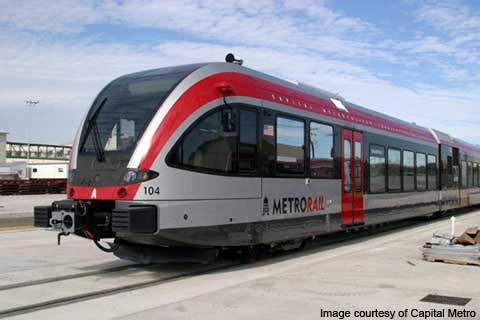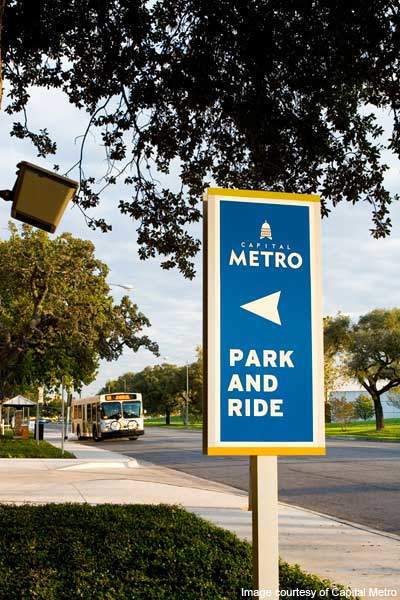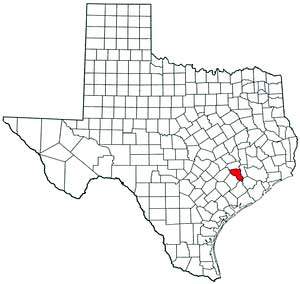On 22 March 2010 a new rapid transit system, Capital Metro, began its operations in Austin, Texas, US. It is the foremost metro system in Central Texas and connects Texas cities, Austin and Leander. The metro system acts as an alternative to heavily congested highways in the region. It will be operated and maintained by Herzog Transit Services.
Austin, the capital city of Texas, has a population of about 786,484 and is served by public transportation systems, including bus and rail. The bus services in the city are provided by Metro bus transportation system.
The metro rail system expects an average of 2,000 embarkments on a weekday. The free ridership on the opening day was 2,942.
Capital Metropolitan Transportation Authority has awarded an operations and maintenance contract to Herzog Transit Services in December 2009, following the termination of a six-year contract with Veolia in July 2007.
Capital Metro project
The project was a part of All Systems Go Long-Range Transit Plan that includes the development of local, express and MetroRapid bus services in the region. The project to construct a commuter rail transportation system/metro system on the pre-existing freight rail lines was approved in 2004. It involved the construction of a single 32m line.
The cost of the project was initially estimated to be $90m but was later increased by $15m to $105m due to construction problems and safety issues. The metro system was initially scheduled to open to the public in fall 2008. The increased budget, however, delayed the project and postponed the date of operations to March 2010.
The system’s entire route of the system was tested in February 2010. Further, the commercial operation of the system was approved by the Federal Railroad Administration on 5 March 2010.
Capital metro line routes
The 32-mile (52km) metro system includes a single line, the red line, which is a north-south bound line connecting the two major cities of Texas. The red line connects nine stations in the cities Austin and Leander.
The Downtown Austin station, which is in the northern region of Austin, is connected to the southern station Leander through the halts MLK, Jr., Highland, Crestview via Plaza Saltillo, and then through the halts Kramer, Howard and Lakeline.
Capital metro infrastructure
The crossings between the two terminals Leander and Downtown Austin were installed with quad gates that forbid trains from driving around railroad gates. The crossings of the system also have pavement markings and warning signage.
Further, the stations of the metro system have glass and steel canopies, windscreens, seating and informational displays.
Metro system rolling stock
The current fleet size of the metro system is 19. Of the entire fleet, ten are southbound trains and the remaining are northbound trains. The system also integrates six GTW 2/6 diesel light rail vehicles (LRV) from Stadler Bussnang. A contract to build these six diesel-electric rail compartments was awarded to Stadler Rail in September 2005.
Stadler’s trains are low in noise and vibration compared with conventional commuter rail cars used in the US. All vehicles were delivered to the system by spring 2008.
The trains incorporated by the metro system are self-propelled and moved by utilising two diesel electric traction chains at speeds up to 60mph. They are also capable of accelerating and retarding at a faster pace than traditional commuter rail vehicles.
Each diesel car has the capability to accommodate up to 225 passengers, 108 seated and 117 standing. It integrates space for passengers with wheelchairs. The vehicles have low-floor access, making them easy for commuters to use.
The facilities in the cars include Americans with Disabilities Act (ADA) accessibility, bicycle racks, tables or pull-down trays, luggage racks, WiFi service, automated station announcements and message boards with real-time passenger information.
Metro signalling and communications
The signalling and communication system integrated in the metro system includes visual and acoustic passenger information, a video recording system and wireless LAN infrastructure.
Future metro plans
Capital Metro has proposed a 28-mile long green line for future expansion. The possible extensions will be towards Elgin and may connect the red line’s terminal downtown to Manor or beyond. The green line will move along the freight tracks of the Capital Metro.
In addition, the extensions along the abandoned MoKan Rail Corridor are also being assessed.










